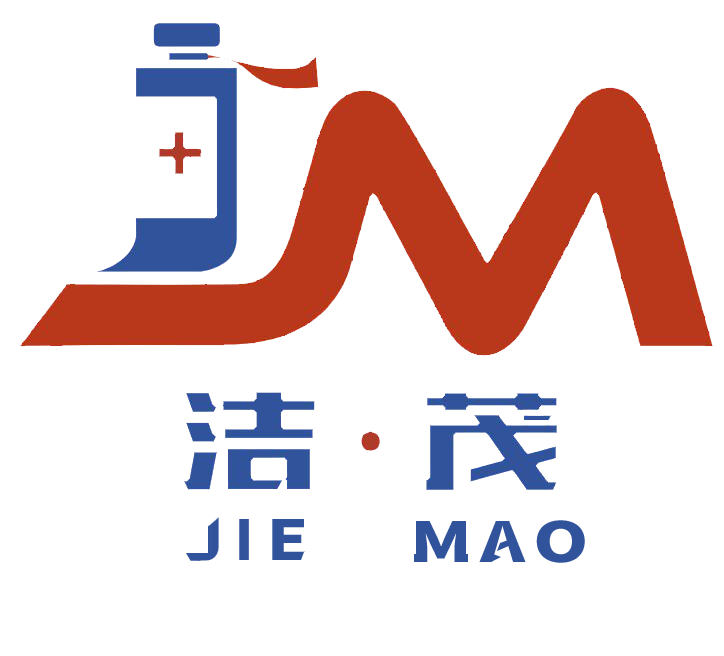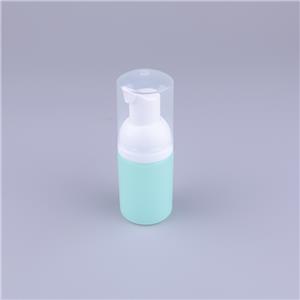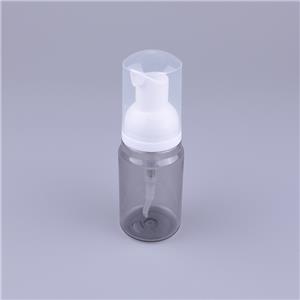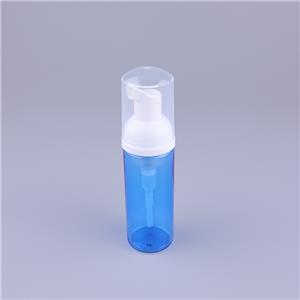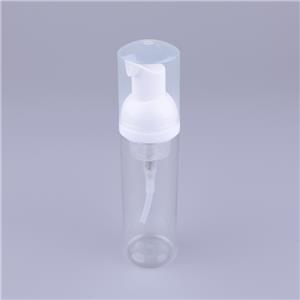- Home
- >
- News
- >
- Public Information
- >
- Mini Plastic Liquor Bottle
Mini Plastic Liquor Bottle
Mini Plastic Liquor Bottle
In the increasingly diversified alcohol market, innovation in packaging forms has become an important factor in attracting consumers' attention. Mini plastic wine bottles, with their small and exquisite appearance, lightweight and durable characteristics, have broken the monopoly of traditional glass wine bottles and gradually emerged in the field of alcohol packaging. From carrying small drinks during outdoor picnics to exquisite tasting packages in bars, mini plastic bottles have unique advantages that meet the needs of consumers for alcoholic products in different scenarios, while also driving the transformation and development of the packaging industry.
1、 Material characteristics and safety performance
Mini plastic wine bottles are mainly made of food grade plastic materials, such as polyethylene (PE), polypropylene (PP), polyethylene terephthalate (PET), etc. The characteristics of these materials determine the basic performance and application range of mini plastic wine bottles.
Polyethylene (PE) is a widely used plastic material with good flexibility and chemical stability. Mini plastic wine bottles made of PE material have strong impact resistance and are not easily broken even in the event of falling or collision, greatly reducing the risk of loss during transportation and use. Its non-toxic and odorless characteristics meet the safety standards of food packaging and are commonly used for packaging low alcohol alcoholic beverages such as fruit wine and rice wine. In addition, PE material has certain barrier properties against oxygen and water vapor, which can delay the oxidation and volatilization of the wine to a certain extent, and maintain the flavor of the wine.
Polypropylene (PP) has outstanding heat resistance and can withstand temperatures above 100 ℃, which gives mini plastic wine bottles made of PP unique advantages in the production of alcoholic beverages that require high-temperature sterilization or hot filling. Meanwhile, PP has good hardness and rigidity, which can keep the bottle in a stable shape and prevent deformation. Some formulated and health wines that require high-temperature processing are often packaged in mini plastic bottles made of PP material. Moreover, PP material has strong chemical stability and is not prone to chemical reactions with the components in the liquor, ensuring the quality and safety of the liquor.
Polyethylene terephthalate (PET) is known for its high transparency and good glossiness. Mini plastic bottles made of PET material can clearly display the color of the wine and enhance the visual appeal of the product. Therefore, they are widely used in wine packaging that emphasizes appearance display, such as fruit wine and pre mixed cocktails. PET has excellent barrier properties, with good barrier effects on oxygen, carbon dioxide, and moisture, which can effectively extend the shelf life of wine and prevent the wine from deteriorating. In addition, PET material is lightweight, easy to carry and transport, and reduces logistics costs, which is also one of the important reasons why it is favored by alcohol producers.
To ensure the safety of mini plastic wine bottles, relevant food packaging standards and regulations must be strictly followed during the production process. In the selection of raw materials, plastic pellets that meet the safety standards for food contact materials must be used, and the use of recycled materials or materials containing harmful substances is strictly prohibited. The production process requires strict quality inspection of plastic pellets, including testing for their heavy metal content, harmful chemical residue, and other indicators. At the same time, comprehensive safety testing should also be conducted on finished wine bottles, such as odor detection, to ensure that the wine bottles are odorless and will not have adverse effects on the flavor of the liquor; Conduct sealing testing to prevent leakage of alcohol; We also need to conduct hygiene inspections to ensure that the wine bottles meet food hygiene requirements and safeguard the health and safety of consumers.
2、 Design process and personalized expression
The design of mini plastic wine bottles combines functionality and aesthetics, with every detail carefully considered from bottle body shape, capacity specifications to exterior decoration.
In terms of bottle body design, mini plastic wine bottles break through the traditional single form of wine bottles and present a rich and diverse range of designs. Common examples include classic cylindrical shapes, which are simple and elegant in shape, easy to hold and stack for storage, and suitable for most alcoholic products; The square bottle body has a unique angular feel, which can stand out when displayed on the shelf and attract consumers' attention. It is commonly used for packaging alcoholic beverages with unique styles; There are also unconventional bottle body designs, such as imitating animal shapes, plant shapes, or other creative shapes. These types of wine bottles are full of fun and artistic sense, and are suitable for packaging as gift or commemorative wines. In addition, the line design of the bottle body is also very particular. Smooth curves or tough straight lines can give the bottle a different temperament, combined with ergonomic design, allowing consumers to have a comfortable grip experience during use.
Capacity specification is an important parameter in the design of mini plastic wine bottles, with common capacities including 50ml, 100ml, 150ml, etc. The 50ml ultra small capacity is suitable as a wine tasting set, allowing consumers to easily try different types of wine and reduce purchasing risks; The capacities of 100ml and 150ml are relatively moderate, meeting the needs of consumers for moderate drinking at once and convenient to carry, suitable for outdoor leisure, tourism and other scenarios. In addition, some special purpose mini plastic wine bottles will be designed with unique capacities based on product positioning, such as bar specific cocktail bottles that may be designed in sizes of 30ml or 75ml to meet the precise blending needs of bartenders.
Appearance decoration is a key element in achieving personalized expression of mini plastic wine bottles. Through processes such as screen printing, heat transfer printing, hot stamping, and labeling, the surface of wine bottles can present a rich variety of patterns and text. Screen printing can print delicate patterns and bright colors on wine bottles, suitable for large-area pattern decoration; Heat transfer printing can achieve high-definition and realistic image effects, commonly used to print exquisite landscapes, art paintings, etc. on wine bottles; The hot stamping process can enhance the texture and grade of the wine bottle, making it shine with a unique light under the light, and is commonly used in high-end wine packaging; The labeling methods are flexible and diverse, and different materials and shapes of labels can be designed according to brand needs, such as paper labels, metal labels, plastic labels, etc. The labels can be printed with brand logos, product information, promotional slogans, etc., playing a role in brand promotion and product introduction. In addition, some wine bottles also use special techniques such as sanding, hollowing out, and embossing to increase the three-dimensional sense and texture of the wine bottle, create unique visual effects, and enhance the added value of the product.
3、 Manufacturing and Quality Control
The production and manufacturing of mini plastic wine bottles mainly include two processes: injection molding and blow molding. Different processes are suitable for the production of wine bottles of different types and needs.
Injection molding is the process of heating and melting plastic particles, injecting them into the mold cavity through an injection molding machine, cooling and solidifying them to obtain the desired shape of a wine bottle. This process is suitable for producing mini plastic wine bottles with complex shapes and high dimensional accuracy requirements, such as wine bottles with special decorative structures or complex shapes. Injection molding has the advantages of high production efficiency and stable product quality, and can achieve large-scale automated production. In the injection molding process, it is necessary to precisely control the process parameters such as heating temperature, injection pressure, and holding time of the plastic to ensure the dimensional accuracy, appearance quality, and physical properties of the wine bottle. For example, excessive temperature may cause plastic to decompose and discolor, affecting the quality of wine bottles; Insufficient pressure may cause defects such as material shortage and deformation in the wine bottle.
Blow molding is the process of placing a heated and softened plastic preform in a mold, expanding it tightly against the inner wall of the mold through compressed air, and cooling it to obtain a hollow wine bottle. Blow molding is divided into two methods: extrusion blow molding and injection blow molding. Extrusion blow molding has low cost and is suitable for producing mini plastic bottles with large capacity and relatively simple shape. It has high production efficiency and is commonly used for mass production of ordinary specification bottles; The products produced by injection blow molding have high precision, good quality, uniform bottle wall thickness, and precise bottle mouth size, making them suitable for pharmaceutical grade or high-end wine packaging that requires high quality. However, the equipment investment is large and the production cost is relatively high.
Strict quality control is implemented throughout the production process. Starting from the inspection of raw material storage, various performance indicators of plastic particles should be tested, including density, melt flow rate, tensile strength, etc., to ensure that the raw materials meet production requirements. In the production process, it is necessary to monitor the real-time operation status and process parameters of the equipment, conduct regular spot checks on the produced wine bottles, and inspect the appearance quality of the wine bottles, such as whether there are defects such as bubbles, scratches, and deformations; Measure the dimensional accuracy of the wine bottle to ensure it meets the design standards; Perform a sealing test by injecting a certain amount of liquid into the bottle and sealing it. Check for any liquid leakage by inverting or applying pressure. Before the finished product is put into storage, a comprehensive quality inspection is required, including packaging integrity check, label pasting accuracy check, etc. Only mini plastic bottles that have passed all quality inspection processes can enter the market for sale to ensure that consumers receive high-quality products.
4、 Diversified application scenarios and market value
Mini plastic wine bottles, with their own advantages, have demonstrated unique market value and application potential in multiple fields.
In the alcohol retail market, mini plastic bottles provide consumers with more diverse choices. For consumers, small capacity packaging reduces purchasing costs and trial risks. They can taste different brands and types of wine at lower prices, satisfying their desire to explore new things. For alcohol producers, mini plastic bottles can help promote new products by launching small capacity trial drinks to attract consumers to try and promote sales of large capacity products. At the same time, mini plastic wine bottles have advantages in shelf display in retail channels such as convenience stores and supermarkets. Their compact size can display more product types in limited shelf space, attract consumers' attention, and increase product exposure and sales volume.
In the catering and entertainment industry, mini plastic wine bottles are also popular. Bars, restaurants, and other places often use it as packaging for specialty drinks to provide consumers with personalized drinking experiences. For example, some bars have launched mini cocktails, which are packaged in uniquely shaped mini plastic bottles. This not only facilitates consumers to taste a variety of cocktails, but also increases the fun and ceremony of consumption. Mini plastic bottles have become the preferred packaging for consumers to bring their own drinks at social occasions such as parties and gatherings due to their portability and stylish appearance. Consumers can bring different types of small drinks according to their preferences, share them with friends, and create a relaxed and pleasant atmosphere.
In the tourism market, the advantages of mini plastic wine bottles are more prominent. For tourists, carrying glass wine bottles poses problems such as fragility and inconvenience, while mini plastic wine bottles are lightweight, drop resistant, and can be easily placed in backpacks or suitcases. Some local specialty wines have become popular tourist souvenirs after being packaged in mini plastic bottles. Tourists can give them as gifts to their friends and family, which is not only convenient to carry, but also has local characteristics and commemorative significance. In addition, mini plastic bottles have become an ideal choice for consumers in outdoor camping, picnics and other activities, allowing people to enjoy nature while enjoying a drink at any time, adding to the fun of life.
5、 Development Challenges and Future Trends
Although mini plastic wine bottles have many advantages, they also face some challenges in their development process. Firstly, consumers have certain doubts about the safety of plastic materials. Although food grade plastics meet safety standards, some consumers still prefer to choose wine bottles made of traditional materials such as glass or ceramics. Secondly, environmental issues are receiving increasing attention, and the disposal of plastic waste has become a social focus. The recycling rate of mini plastic wine bottles needs to be improved. If not handled properly, it may cause pollution to the environment. In addition, the market competition is fierce, and many brands have launched mini plastic bottle products. How to stand out in a market with severe product homogenization, create a unique brand image and product features, is an important issue faced by enterprises.
Faced with these challenges, the mini plastic bottle industry is also actively exploring future development trends. In terms of environmental protection, research and promotion of biodegradable plastic materials have become important directions. Biodegradable plastics such as polylactic acid (PLA) and polyhydroxyalkanoates (PHA) can be decomposed into carbon dioxide and water by microorganisms in the natural environment, without causing long-term pollution to the environment. More and more companies are trying to use biodegradable plastics to produce mini plastic wine bottles in response to environmental calls and meet consumers' demand for green packaging. At the same time, improving the recycling rate of plastic wine bottles is also a key measure. By establishing a sound recycling system, discarded mini plastic wine bottles can be classified, recycled, cleaned, crushed, and granulated, so that they can be reused in the production of plastic products.
In terms of product innovation, intelligence and personalization will become important trends for future development. Intelligent mini plastic wine bottles may be equipped with chips or sensors. Consumers can obtain detailed information about the wine, such as place of origin, brewing process, taste characteristics, etc., by scanning QR codes or using mobile apps. They can also achieve anti-counterfeiting and traceability functions, enhancing consumer trust in purchasing. Personalized customization services will further develop. Consumers can choose the shape, color, pattern, capacity, etc. of the wine bottle according to their preferences, and even customize exclusive text content, making the wine bottle a unique personalized product to meet the increasingly diverse consumption needs of consumers. In addition, combining technology to develop mini plastic wine bottles with insulation and cooling functions will also bring consumers a more convenient and high-quality drinking experience.
Mini plastic wine bottles occupy an important place in the field of alcohol packaging due to their unique material characteristics, innovative design processes, wide application scenarios, and enormous development potential. Despite facing many challenges, with the advancement of environmental protection technology and product innovation, mini plastic wine bottles are expected to achieve more sustainable, intelligent, and personalized development in the future, bringing more surprises to consumers and injecting new vitality into the liquor market.
